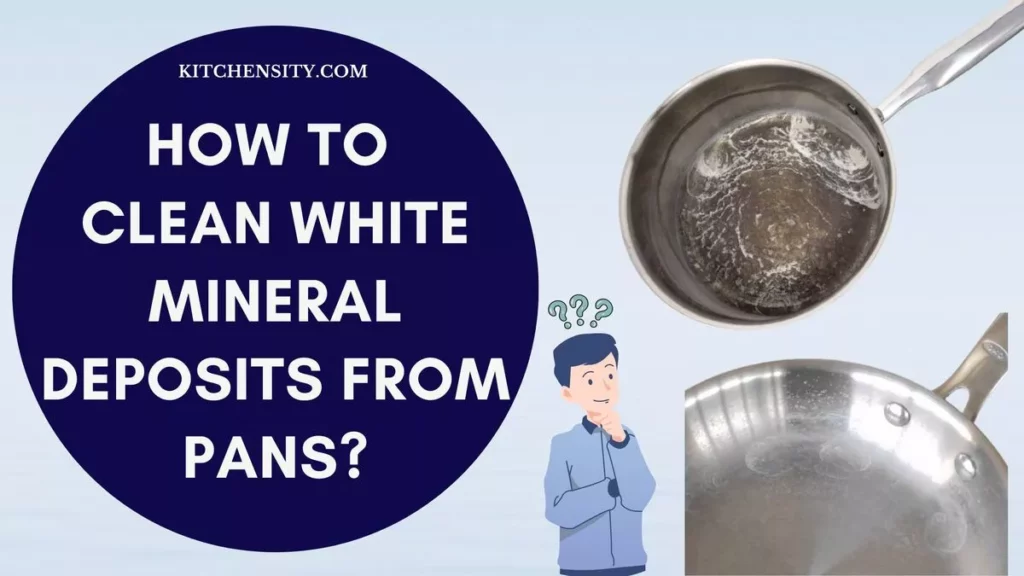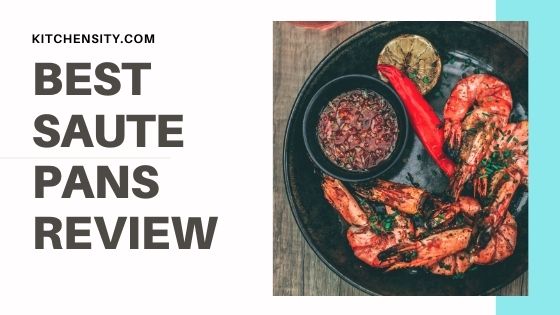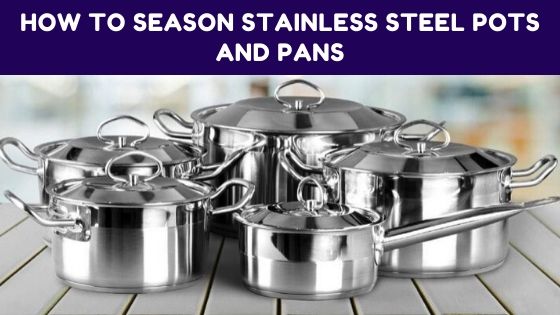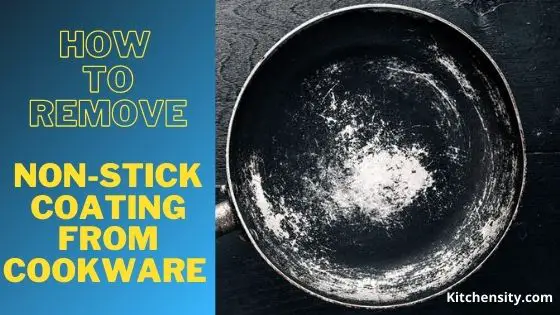Start by creating a solution of equal parts white vinegar and water and soak the pan for about 30 minutes. Then, scrub the pan gently using a mix of lemon juice and baking soda to break down the residue further, and finally, rinse the pan thoroughly with water and dry it completely to prevent future deposits.
Quick Steps To Clean Calcium Deposits:
- First, clean the pan gently to remove loose deposits.
- Next, soak the pan in a solution of vinegar and water.
- After that, apply a paste of lemon and baking soda to the deposits.
- Now, fill the pan with water and bring it to a boil. It helps to loosen and dislodge stubborn mineral deposits.
- If required, you can also use commercial descaling products.
- Now, gently scrub the deposits with a non-abrasive sponge or cloth and rinse the pan thoroughly with water.
- Finally, dry the pan completely with a towel or allow it to air dry.
- Polish the pan if desired to restore its shine.
These stubborn stains not only affect the appearance of your pans but also impact the taste and quality of the food you prepare.

Read below for a detailed step-by-step guide.
Table of Contents
- 1 What Are White Mineral Deposits Or Calcium Deposits?
- 2 Step-By-Step Guide To Clean White Mineral Deposits From Pans.
- 3 How To Prevent Calcium Build-Up On Pots And Pans?
- 4 Does Vinegar Remove Mineral Buildup?
- 5 Final Thoughts On Cleaning White Mineral Deposits From Pans.
- 6 FAQs (Frequently Asked Questions).
- 6.1 How Do You Get Rid Of White Mineral Deposits?
- 6.2 Can I Use Bleach To Remove White Mineral Deposits?
- 6.3 Is It Safe To Use Metal Scouring Pads On Pans?
- 6.4 Can I Clean Non-Stick Pans The Same Way?
- 6.5 Why Do White Mineral Deposits Form So Quickly?
- 6.6 Can I Use Apple Cider Vinegar Instead Of White Vinegar?
What Are White Mineral Deposits Or Calcium Deposits?
White mineral deposits or calcium deposits, are a common issue that can occur on various surfaces, including glass, metal, and ceramic. These deposits primarily comprise calcium carbonate, a mineral found in hard water. When water evaporates, it leaves behind these deposits, which can build up over time and become unsightly.
In kitchenware, such as non-stick pans or glass cooktops, these deposits can form when water droplets containing minerals evaporate during cooking or cleaning. They can also occur in appliances like coffee makers, kettles, and dishwashers.
Also Read – How To Keep Baking Pans From Rusting?
What Are The Common Causes Of White Mineral Deposits?
White mineral deposits, or calcium deposits, are typically caused by hard water. Hard water contains high levels of minerals, such as calcium and magnesium. When hard water evaporates, it leaves behind these minerals, which can accumulate over time and form deposits. Some common causes of white mineral deposits include:
- Water Quality: If your water supply is hard water, it is more likely to leave behind mineral deposits. Hard water is common in areas with high levels of calcium and magnesium in the groundwater.
- Water Evaporation: When water evaporates, the minerals in the water are left behind, leading to the formation of deposits. This can happen on surfaces like glass, metal, and ceramic.
- Cooking and Cleaning: When water containing minerals is used for cooking or cleaning, the minerals can be deposited on surfaces such as non-stick pans or glass cooktops.
- Appliances: Appliances that use water, such as coffee makers, kettles, and dishwashers, can develop mineral deposits over time if not properly maintained.
- Lack of Cleaning: Not cleaning surfaces regularly can lead to the accumulation of mineral deposits over time, making them harder to remove.
Also Read – How To Keep Food From Sticking To Copper Pans?
Step-By-Step Guide To Clean White Mineral Deposits From Pans.
Mineral deposits on your cooking pans can be stubborn, but with the right approach and a bit of patience, you can effectively remove them. Follow this step-by-step guide to restore your pans to their sparkling best.
Materials Required: White vinegar, Baking soda, Soft cloth or sponge, Mild dish soap, and Non-abrasive scrub brush.
Here’s a step-by-step guide to cleaning white mineral deposits from pans:
- Step 1: Prepare a vinegar solution by mixing equal parts of white vinegar and water in the pan, enough to cover the affected areas.
- Step 2: Soak the pan in the vinegar solution for 30 minutes to an hour, or longer if the deposits are stubborn.
- Step 3: Optionally, bring the vinegar and water mixture to a boil in the pan, let it simmer for a few minutes, then turn off the heat and let it cool.
- Step 4: Gently scrub the deposits with a non-abrasive sponge or cloth, using the vinegar to help dissolve the minerals.
- Step 5: Rinse the pan thoroughly with water to remove any remaining vinegar and mineral residue.
- Step 6: Dry the pan completely with a towel or allow it to air dry before storing or using it again.
- Step 7: For stubborn deposits, repeat the process or use a commercial cleaner designed for removing mineral deposits.
- Step 8: Avoid using abrasive cleaners or scrubbers, as they can damage the pan’s surface.
- Step 9: Finally, polish your pan using a mixture of water and white vinegar for extra shine.
Also Read – How To Clean Magnalite Pots And Pans?
How To Prevent Calcium Build-Up On Pots And Pans?
Calcium build-up or limescale or mineral deposits can be a persistent issue on pots and pans, affecting their performance and appearance. To keep your cookware free from calcium build-up, follow these preventive measures.
- Use soft water for cooking and cleaning to reduce mineral content.
- Immediately dry pots and pans after washing to prevent water spots.
- Clean pots and pans regularly with a vinegar solution to dissolve mineral deposits.
- Avoid cooking at high temperatures to prevent accelerated mineral deposit formation.
- Consider installing a water softener to reduce mineral content in water.
- Clean pots and pans regularly to prevent mineral deposits from accumulating.
- Use non-stick cookware, which is less prone to calcium build-up.
- Periodically use descaling products designed for pots and pans to remove calcium build-up.
Also Read – How To Clean Burnt Glass Pans?
The Negative Impact Of White Mineral Deposits On Cooking Pans.
White mineral deposits on cooking pans can lead to aesthetic issues, reduced non-stick properties, uneven cooking, reduced lifespan, health concerns regarding food taste, and difficulty in cleaning.
- The deposits can make the pans look dirty and unattractive, affecting the overall presentation of your food.
- Mineral deposits can interfere with the pan’s non-stick properties, causing food to stick and making cooking more difficult.
- The build-up of mineral deposits can lead to uneven heat distribution, resulting in uneven cooking and potentially burnt or undercooked food.
- Mineral deposits can corrode the pan’s surface over time, reducing its lifespan and effectiveness.
- While not a direct health risk, mineral deposits can affect the taste and appearance of your food, potentially impacting your enjoyment of the meal.
- Once mineral deposits have formed, they can be challenging to remove, requiring more effort and potentially damaging the pan if not cleaned properly.
According to Chef John Doe “White mineral deposits on pans are not just unsightly; they can also affect the cooking performance of your cookware. Regular cleaning and maintenance are key to ensuring your pans remain in top condition.”
Also Read – How To Clean Broiler Pans?
Does Vinegar Remove Mineral Buildup?
Yes, vinegar can effectively remove mineral buildup. Its acidic nature helps dissolve minerals like calcium and magnesium, making it easier to clean surfaces affected by mineral deposits. Vinegar is particularly useful for removing mineral buildup on items such as faucets, showerheads, and cooking pans.
Here’s how you can use vinegar to remove mineral buildup:
- Vinegar Soaking: Mix equal parts of white vinegar and water in a container large enough to submerge the item with mineral buildup. Place the item in the solution and let it soak for some time, usually around 30 minutes to an hour. The vinegar will work to dissolve the minerals, making them easier to wipe away.
- Vinegar Spray And Wipe: You can create a vinegar spray for smaller items or areas with light mineral deposits. Fill a spray bottle with undiluted white vinegar and spray it onto the affected surface. Let it sit for a few minutes before wiping away the dissolved mineral deposits with a cloth or sponge.
- Lemon And Vinegar Mix: You can combine lemon juice with vinegar to enhance the effectiveness and add a pleasant fragrance. Create a paste using equal parts lemon juice and vinegar. Apply the paste to the mineral buildup, let it sit for a while, and then scrub gently to remove the deposits.
- Boiling Vinegar Method: For items that can handle high heat, you can boil a mixture of vinegar and water directly in the pot or pan. After boiling, let the solution cool, discard it, and then rinse and clean the item. This method is particularly useful for appliances like kettles that develop mineral deposits over time.
- Continuous Maintenance: Regularly incorporating vinegar-based cleaning into your routine can help prevent the formation of heavy mineral deposits. Periodic vinegar rinses can keep surfaces clean and minimize the need for deep cleaning sessions.
It’s important to note that while vinegar is effective for removing mineral buildup, it is acidic and may react with certain materials. Avoid using vinegar on surfaces that are sensitive to acid, such as marble, natural stone, or cast iron pans with seasoning. Always perform a patch test on an inconspicuous area before using vinegar on a larger surface.
Also Read – How To Clean Oxidized Aluminum Pans?
Final Thoughts On Cleaning White Mineral Deposits From Pans.
Cleaning white mineral deposits from cooking pans might seem like a daunting task, but with the right methods and maintenance, you can restore your pans’ functionality and appearance. A clean and well-maintained pan enhances your cooking experience, ensures optimal cooking results, and protects your health by preventing food contamination.
By adopting a holistic approach that combines effective cleaning, preventive measures, and timely replacement, you ensure that your pans remain reliable companions in your culinary journey. So, the choice to combat white mineral deposits goes beyond preserving the aesthetics of your pans; it’s about maintaining the heart of your kitchen.
Also Read – How To Clean Burnt Hard Anodized Cookware?
FAQs (Frequently Asked Questions).
-
How Do You Get Rid Of White Mineral Deposits?
To eliminate white mineral deposits, soak the affected area in a solution of equal parts white vinegar and water, then scrub with a lemon juice and baking soda mixture before rinsing thoroughly.
-
Can I Use Bleach To Remove White Mineral Deposits?
Using bleach is not recommended, as it can damage the pan’s surface and pose health risks if not thoroughly rinsed.
-
Is It Safe To Use Metal Scouring Pads On Pans?
Metal scouring pads can scratch the pan’s surface. Opt for non-abrasive materials to avoid damaging the pan.
-
Can I Clean Non-Stick Pans The Same Way?
For non-stick pans, use milder cleaning methods to prevent damaging the non-stick coating.
-
Why Do White Mineral Deposits Form So Quickly?
Hard water and mineral-rich tap water are the main contributors, depositing minerals when water evaporates during cooking.
-
Can I Use Apple Cider Vinegar Instead Of White Vinegar?
Yes, apple cider vinegar can be used as an alternative. It also contains acidity that helps dissolve mineral deposits.
Katrina Smith is a seasoned expert with over 25 years of experience in all things related to cooking and the kitchen. As an avid cook and kitchen enthusiast, she is passionate about sharing her knowledge and expertise on cookware, kitchen appliances, kitchen tips, and kitchen staples.
Through her articles and reviews, Katrina aims to inspire and help others improve their cooking skills, experiment with different ingredients, and invest in quality cookware and appliances.

![How To Season And Clean Cast Iron Cookware? [4 Effective Ways] 3 How To Season And Clean Cast Iron Cookware](https://www.kitchensity.com/wp-content/uploads/2020/06/How-To-Season-And-Clean-Cast-Iron-Cookware.jpg)

![Stainless Steel Vs Nonstick Vs Ceramic Cookware Set [An Ultimate Guide 2023] 5 Stainless Steel vs Nonstick vs Ceramic Cookware Set](https://www.kitchensity.com/wp-content/uploads/2019/09/Stainless-Steel-vs-Ceramic-vs-Nonstick-Cookware-Sets-e1621083482728.jpg)

![What Pans Can You Use Cooking Spray On? [Ultimate Guide] 7 Types of pans with which cooking spray can be used](https://www.kitchensity.com/wp-content/uploads/2023/02/What-Pans-Can-You-Use-Cooking-Spray-On.jpg)

